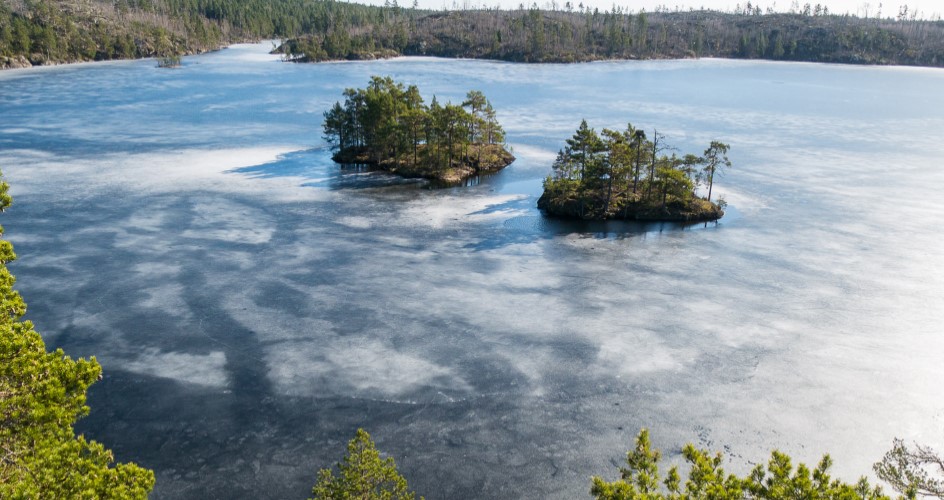 Foto: Janne Bergström
Foto: Janne BergströmGeology
Tyresta is characterised by a sort of fissure valley landscape that is unique for central Sweden and eastern Finland. That landscape is a precondition for the variation of rocky pine forest, spruce forest and dark forest lakes that you can experience in the national park.
Tyresta lies on a plateau of primeval rock that was formed a staggering 1,800 million years ago. The plateau slopes gently toward the Baltic coast and is crossed by fissure valleys that are filled with moraine and other deposits, today overgrown with tall spruce forest. The valleys are sometimes filled with water that forms lakes, streams and moss-covered wetlands. On the meagre, pine-clad rocky ground, the soil is thin and the highest points are over 80 metres above sea level.
During the most recent ice age, the ice sheet slowly moved southward and polished the rocks smooth; it also broke loose boulders on the southern sides of heights. Ice grooves can be seen clearly here and there, not least on the rock outcrops around Tyresta village and along the coast. The bedrock consists primarily of granite and gneiss.
Share with your friends
Share this page with your friends on Facebook, X (formerly Twitter), Google+ and e-mail.





